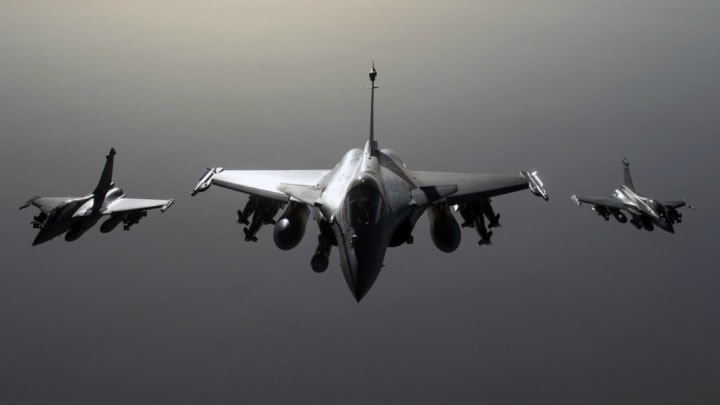How imperial violence backfires

Noam Chomsky Correspondent
The Global War on Terror sledgehammer strategy has spread jihadi terror from a tiny corner of Afghanistan to much of the world, from Africa through the Levant and South Asia to Southeast Asia. It has also incited attacks in Europe and the United States. The invasion of Iraq made a substantial contribution to this process, much as intelligence agencies had predicted. The general consequences of resorting to the sledgehammer against vulnerable societies comes as little surprise. William Polk’s careful study of insurgencies, “Violent Politics”, should be essential reading for those who want to understand today’s conflicts, and surely for planners, assuming that they care about human consequences and not merely power and domination. Polk reveals a pattern that has been replicated over and over.
The invaders — perhaps professing the most benign motives — are naturally disliked by the population, who disobey them, at first in small ways, eliciting a forceful response, which increases opposition and support for resistance.
The cycle of violence escalates until the invaders withdraw — or gain their ends by something that may approach genocide. Barack Obama’s global drone assassination campaign, a remarkable innovation in global terrorism, exhibits the same patterns.
By most accounts, it is generating terrorists more rapidly than it is murdering those suspected of someday intending to harm us — an impressive contribution by a constitutional lawyer on the 800th anniversary of Magna Carta, which established the basis for the principle of presumption of innocence that is the foundation of civilised law. Another characteristic feature of such interventions is the belief that the insurgency will be overcome by eliminating its leaders. But when such an effort succeeds, the reviled leader is regularly replaced by someone younger, more determined, more brutal, and more effective. Polk gives many examples.
Military historian Andrew Cockburn has reviewed American campaigns to kill drug and then terror “kingpins” over a long period in his important study Kill Chain and found the same results. And one can expect with fair confidence that the pattern will continue.
No doubt right now U.S. strategists are seeking ways to murder the “Caliph of the Islamic State” Abu Bakr al-Baghdadi, who is a bitter rival of al-Qaeda leader Ayman al-Zawahiri.
The likely result of this achievement is forecast by the prominent terrorism scholar Bruce Hoffman, senior fellow at the US Military Academy’s Combating Terrorism Centre.
He predicts that “al-Baghdadi’s death would likely pave the way for a rapprochement with al-Qaeda producing a combined terrorist force unprecedented in scope, size, ambition and resources.”
Polk cites a treatise on warfare by Henry Jomini, influenced by Napoleon’s defeat at the hands of Spanish guerrillas, that became a textbook for generations of cadets at the West Point military academy.
Jomini observed that such interventions by major powers typically result in “wars of opinion,” and nearly always “national wars,” if not at first then becoming so in the course of the struggle, by the dynamics that Polk describes. Jomini concludes that “commanders of regular armies are ill-advised to engage in such wars because they will lose them,” and even apparent successes will prove short-lived.
Careful studies of al-Qaeda and ISIS have shown that the United States and its allies are following their game plan with some precision. Their goal is to “draw the West as deeply and actively as possible into the quagmire” and “to perpetually engage and enervate the United States and the West in a series of prolonged overseas ventures” in which they will undermine their own societies, expend their resources, and increase the level of violence, setting off the dynamic that Polk reviews.
Scott Atran, one of the most insightful researchers on jihadi movements, calculates that “the 9/11 attacks cost between $400 000 and $500 000 to execute, whereas the military and security response by the US and its allies is in the order of 10 million times that figure.
On a strictly cost-benefit basis, this violent movement has been wildly successful, beyond even Bin Laden’s original imagination, and is increasingly so. Herein lies the full measure of jujitsu-style asymmetric warfare. After all, who could claim that we are better off than before, or that the overall danger is declining?”
And if we continue to wield the sledgehammer, tacitly following the jihadi script, the likely effect is even more violent jihadism with broader appeal. — The article is excerpted from Noam Chomsky’s new book, “Who Rules the World?” There are countries that generate refugees through massive violence, like the United States, secondarily Britain and France.
Then there are countries that admit huge numbers of refugees, including those fleeing from Western violence, like Lebanon (easily the champion, per capita), Jordan, and Syria before it imploded, among others in the region. And partially overlapping, there are countries that both generate refugees and refuse to take them in, not only from the Middle East but also from the U.S. “backyard” south of the border. A strange picture, painful to contemplate.
Europe is also groaning under the burden of refugees from the countries it has devastated in Africa — not without US aid, as Congolese and Angolans, among others, can testify.
It is now seeking to bribe Turkey (with over two million Syrian refugees) to distance those fleeing the horrors of Syria from Europe’s borders, just as Obama is pressuring Mexico to keep U.S. borders free from miserable people seeking to escape the aftermath of Reagan’s GWOT along with those seeking to escape more recent disasters, including a military coup in Honduras that Obama almost alone legitimised, which created one of the worst horror chambers in the region.
Words can hardly capture the US response to the Syrian refugee crisis, at least any words I can think of.
Noam Chomsky is professor emeritus in the Department of Linguistics and Philosophy at Massachusetts Institute of Technology. The article is excerpted from his new book, “Who Rules the World?”









Comments